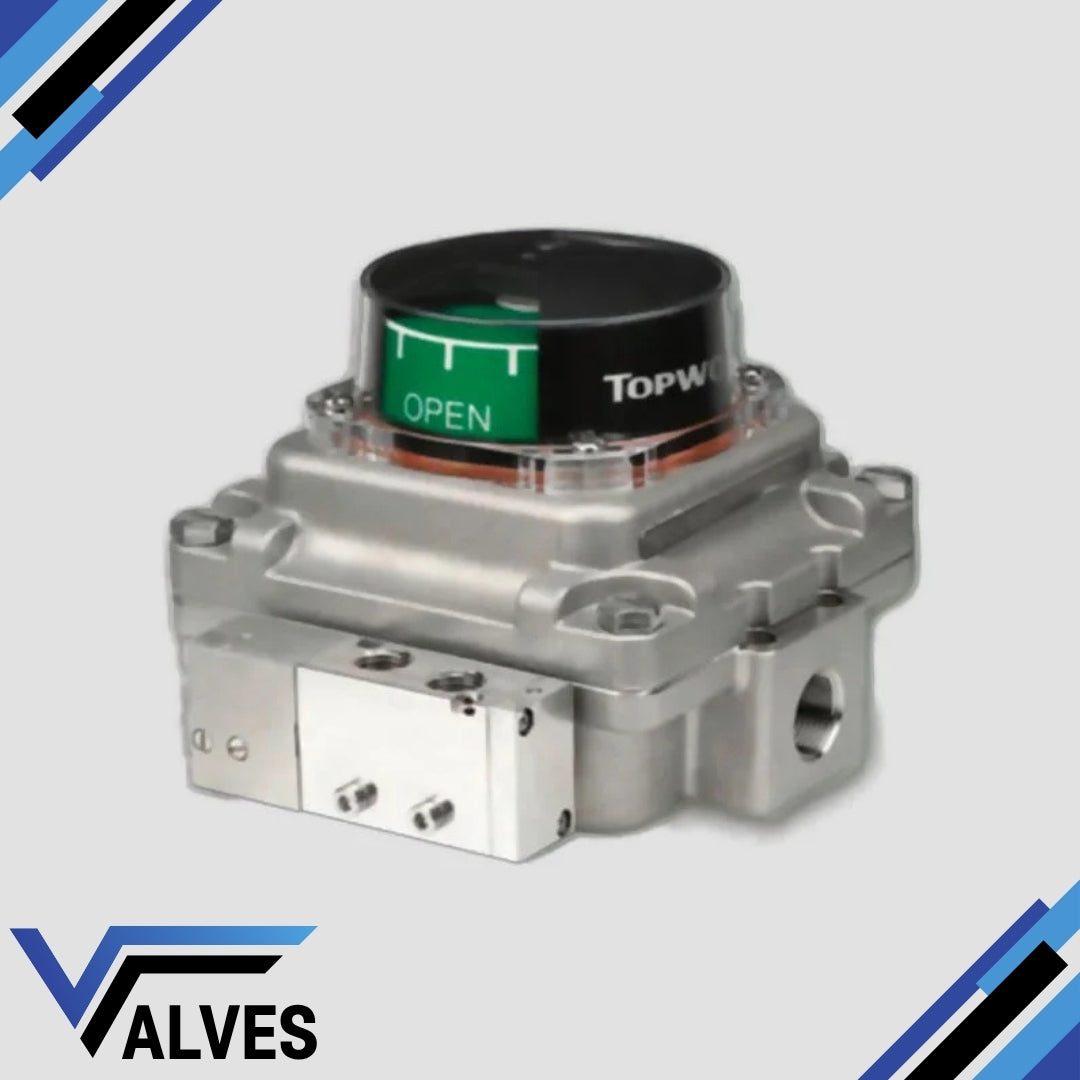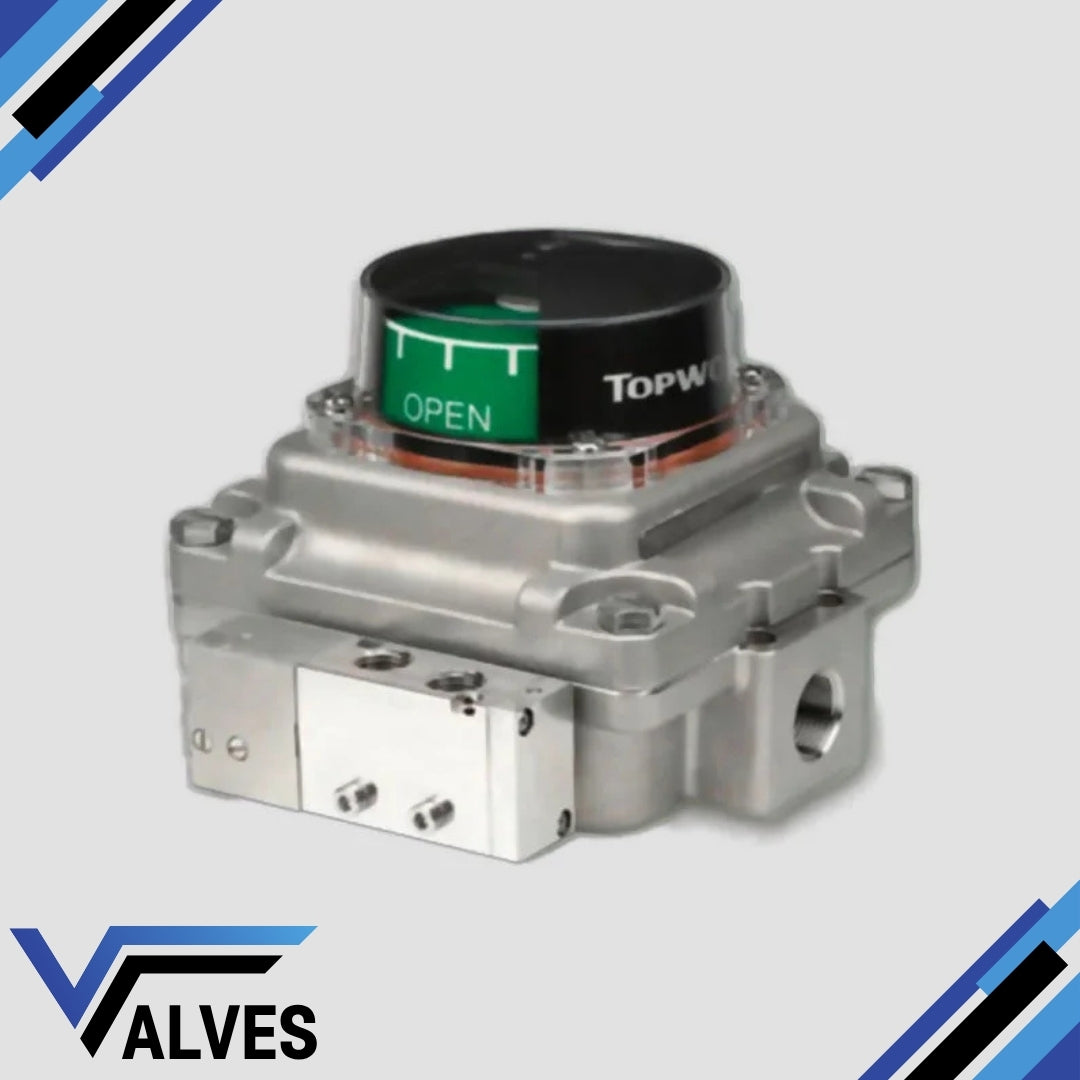Topworx Switchboxes
TopWorx Limit Switch Box TXS-421GNMM Valve Monitor
TopWorx Limit Switch Box TXS-421GNMM Valve Monitor
Couldn't load pickup availability
This versatile valve monitor ensures accurate valve position feedback and control, with a 4-20mA position transmitter for precise tracking. The TXS-421GNMM integrates easily with valve automation systems, featuring a robust enclosure that protects the internal components from harsh environments, including dust and moisture. It also supports a variety of mounting options to ensure compatibility with different actuator types.
Key Features:
- 4-20mA Position Transmitter: Delivers real-time valve position feedback, enabling precise control in automated processes.
- Durable Enclosure: Rated IP67 for protection against dust and water ingress, and designed for use in hazardous locations.
- Wide Temperature Range: Can operate in extreme temperatures, with components designed to handle up to +180°C for silicone O-rings, providing reliability in challenging environments.
- Certification: Certified for use in explosive atmospheres, including ATEX and IECEx, making it suitable for industries such as oil and gas, chemical, and petrochemical.
- Direct Mounting: Compact design for easy installation on a variety of valve types, reducing the need for additional hardware.
- Optional Integrated Solenoid Valve: Enhances control capabilities by combining position monitoring and solenoid operation in a single unit.
Additional Information:
The TXS-421GNMM is designed to provide a long operational life with minimal maintenance. For instance, its wear-resistant components ensure stability even after millions of cycles, making it ideal for high-demand applications. The device’s integrated diagnostics also simplify troubleshooting, providing error codes for quick identification and resolution of potential issues. Additionally, the unit’s flexible configuration options allow for customisation to meet specific process requirements, including over/under-travel correction modes.
Share

FAQ's
What is the difference between a valve and an actuator?
What types of actuators are available?
The main types of actuators are:
Pneumatic actuators – use compressed air for fast, reliable operation.
Electric actuators – use electrical power for precise control.
Hydraulic actuators – use fluid pressure for high-torque applications.
Each type offers unique advantages depending on the environment, media, and system control needs.
How do I choose the right actuator for my valve?
To select the correct actuator, consider:
Valve type and torque requirement
Power source available (air, electric, or hydraulic)
Operating environment (temperature, humidity, hazardous area)
Control signal type (on/off or modulating)
Matching actuator torque and compatibility with the valve’s ISO mounting ensures reliable performance.
What are the main types of valves used in automation?
The most common valves in automated systems include:
Ball valves – for tight shutoff and quick operation.
Butterfly valves – for larger flow control with compact design.
Globe valves – for precise throttling and flow regulation.
Check valves – to prevent backflow.
Gate valves – for full bore flow isolation.
What’s the difference between a double-acting and spring-return actuator?
Double-acting actuators use air (or power) to both open and close the valve.
Spring-return actuators use air to open (or close) the valve, and a built-in spring to automatically return it to a safe position when power or air is lost — ideal for fail-safe operation.
How often should valves and actuators be serviced?
Regular maintenance intervals depend on operating conditions, but a good rule of thumb is to inspect every 6–12 months.
This includes checking for leaks, lubrication, seal wear, and actuator responsiveness to prevent unexpected downtime.

